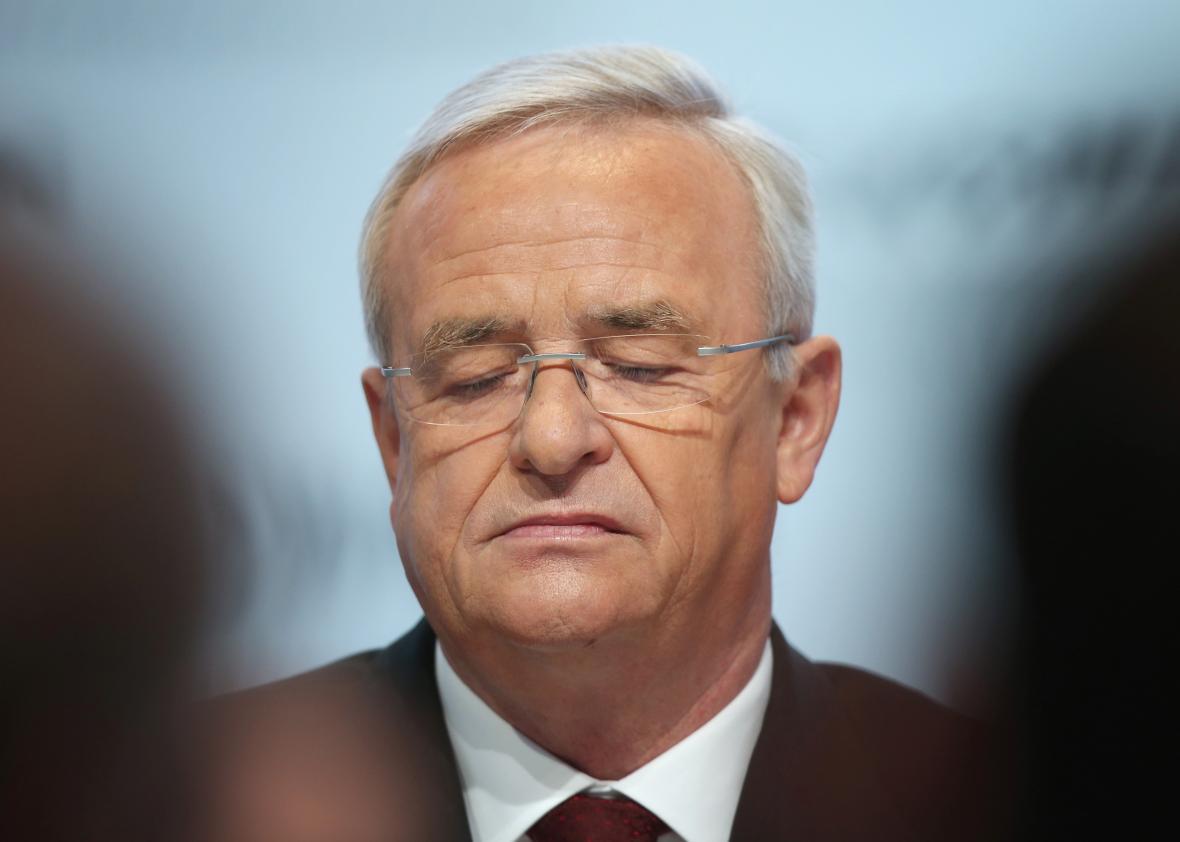Martin Winterkorn, embattled chief executive of Volkswagen and public face of the company’s disastrous “defeat device,” said Wednesday that he is stepping down. His decision follows the unveiling of an emissions-rigging scandal in which Volkswagen systematically cheated on U.S. air pollution tests.
While the full toll of the damage is yet to be taken, the scheme is likely to go down as one of the worst and most environmentally harmful of its kind in corporate history. From 2008 to 2015, Volkswagen programmed as many as 11 million vehicles to detect when federal air pollution tests were being conducted on its diesel cars and to shift to a low-emissions mode until they passed. Once that was accomplished, the cars returned to their normal state—spewing up to 40 times the legal amount of pollutants into the atmosphere.
Here’s a jaw-dropping bit of analysis from the Guardian (spotted in an equally wrenching post on Fusion by Kevin Roose):
The rigging of emissions tests may have added nearly a million tonnes of air pollution by VW cars annually—roughly the same as the UK’s combined emissions for all power stations, vehicles, industry and agriculture. According to a Guardian analysis, the 482,000 non-compliant US vehicles would have released between 10,392 and 41,571 tonnes of NOx annually at an average US mileage, rather than the 1,039 tonnes the EPA standards would imply. Scaled to the 11m global vehicles, that would mean up to 948,691 tonnes of NOx emissions annually. Western Europe’s biggest power station, Drax in the UK, emits 39,000 tonnes of NOx each year.
Emissions-rigging scams are nothing new, but Volkswagen’s setup was particularly nefarious. As law professor James Grimmelmann explained in Slate on Tuesday:
VW’s defeat devices were subtler and more insidious. Instead of just turning off and on with the air conditioner, they took into account “the position of the steering wheel, vehicle speed, the duration of the engine’s operation, and barometric pressure”—a list of criteria that precisely mirrors the conditions of the EPA’s required emissions testing.
This kind of sophisticated sneakery is only practical with software, and software also makes it possible to get away with (for a while). A dedicated circuit or a special valve would have been impossible for VW to hide. But it’s easy to conceal the scraps of code that check to see whether the car is being driven in a way that looks suspiciously like an emissions test. Modern cars already contain tens of millions of lines of code; what’s a few more between friends?
On Tuesday, Winterkorn said that Volkswagen was “working hard to find out exactly what happened” and cooperating “closely with the relevant government organizations and authorities.” He apologized for the company’s misconduct and said it would “do everything necessary to reverse the damage.” He pleaded for consumer forgiveness and “trust as we move forward.” He conspicuously avoided the topic of his own future at Volkswagen. One day later, though, we have an answer on that previously undiscussed point. “Volkswagen needs a fresh start—also in terms of personnel,” Winterkorn said in a statement. “I am clearing the way for this fresh start with my resignation.”
